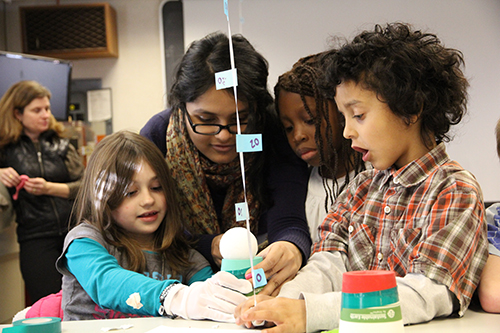
In the day-to-day hustle and bustle of teaching, advising, coaching, and comforting students in need of some extra TLC, some teachers might let some things slide. Maybe your turn-around time for grading isn’t as speedy as it used to be. Maybe your lesson plans suffer a little bit because you’re rushing to get them done while eating dinner in front of your TV. Here are three things to think of even at your most stressed out times.
1. Ensure that the Learners are Engaged
Busy does not equal engaged. Just because the classroom is filled with students who are (or at least appear to be) on task, it doesn’t necessarily mean they are fully engaged in learning. You don’t necessarily want your students to read something and answer questions. How about taking things to the next level and creating a presentation on a topic – actually delving into the complexities of the content at hand. Strive to create activities that push students to tap into higher order thinking.
2. Get Students to be Responsible for THEIR OWN Learning
Traditional classrooms are very teacher-directed. This generally looks like students coming into a room, sitting down, and waiting for the teacher to instruct them what to do next. Some teachers employ a strategy of “bell-ringers” or “do now” activities, which are still teacher-directed. In either case, the teacher is responsible for telling the students what to do. How can we engender independent learners when we’re constantly spoon-feeding them directions for activities? Imagine handing the reins over to the students and have them create their own learning plans, read comments provided by their teacher and start plugging away at a work schedule they helped create. Isn’t this the type of work habit that we are trying to prepare for THEIR futures? The teacher is still involved in the process, but directing (and even redirecting, if need be) when students require additional resources or guidance. This is still a carefully structured environment, but students are responsible for their own learning vis à vis clearly articulated expectations and consequences.
3. Vigorous Academics
Rigor is an educational buzzword these days, but I prefer to consider the word vigor instead. Considering the Latin roots, rigor brings to mind rigidity (even death), whereas vigor makes one think of strength and growth (life!). If students are engaged and taking responsibility for their own learning, then a vigorous academic program comes naturally. Old School techniques like drills and memorization of facts and figures don’t increase learning; they merely allow one to show off a lot of facts. As we move through the 21stcentury, we’re going to see a shift in facts vs. thinking and problem solving. We need to consider what’s more important – what students can easily find out thanks to Google (or even Old School encyclopedias) or what problems they can solve using their reasoning skills.
Photo credit: http://news.chess.cornell.edu/articles/2014/Hine140604.html
